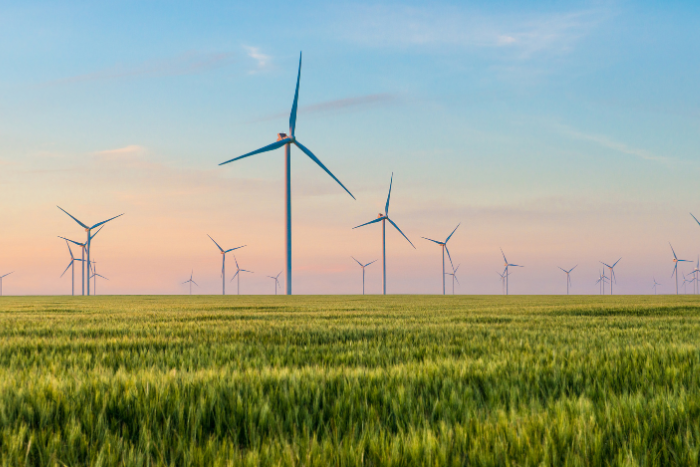The Karnataka High Court ruled that Centre cannot exceed powers granted under Electricity Act by making its regulations on green energy open access binding on state regulatory authorities. The court struck down the Electricity (Promoting Renewable Energy Through Green Energy Open Access) Rules, 2022, along with the Karnataka Electricity Regulatory Commission (KERC) (Terms and Conditions for Green Energy Open Access) Regulations, 2022, Mercom reported.
The report said that the court directed the KERC to consider the interests of all stakeholders and, if necessary, frame appropriate regulations for granting open access to green energy generators and consumers as per the National Electricity Policy and the Tariff Policy formulated by the Union government but retain autonomy in its decision-making.
The central government’s role under the Electricity Act is establishing policy frameworks and issuing directions for the regulator, serving as guidance rather than binding mandates.
India installed ‘record’ 24.5 GW of solar power capacity in CY2024: Study
India added about 24.5 GW of new solar (18.5 GW from utility-scale PV, 4.59 GW rooftop and about 1.48 GW off-grid installations) and 3.4 GW of new wind capacity in 2024, marking over twofold rise in solar installations and a nearly 1.21 times increase in wind installations compared to 2023, according to study by JMK research that attributes this rise partly to Centre’s Surya Ghar Muft Bijli Yojana. The total solar capacity addition in 2024 is the highest recorded capacity in any previous year, The PV Magazine reported. With these additions, India’s total installed renewable energy (RE) capacity reached 209.44 GW as of Dec. 2024. Solar energy is the biggest contributor with around 47% share of the total RE segment (comprising solar, wind. hydro (large and small) and bio power). Utility-scale solar installations (18.5 GW) were up 2.8 times compared to the installations in 2023. Rooftop solar installations (4.59 GW) were up 53% year-on-year.
Clean energy investments will beat fossil fuels in 2025: S&P report
Clean energy technology investments will exceed those in oil and gas for the first time in 2025, according to a report by S&P Global, ET reported adding that cleantech energy supply spending is projected to reach $670 billion in 2025, with solar PV accounting for half of the investments.
The report stated that globally at least 620 GW of new solar and wind capacity will be added globally, equivalent to the combined power systems of India, Pakistan, and Bangladesh. Battery energy storage may surpass pumped hydro storage in installed capacity by 2025, the report said. The report also highlighted that ammonia is emerging as a significant component in low-carbon hydrogen production, and carbon capture, utilization, and storage (CCUS) projects are projected to witness substantial growth.
UAE announces renewable energy facility for round-the-clock power
The UAE launched the world’s first renewable energy facility capable of providing uninterrupted clean power, reported ET. The UAE Minister of Industry and Advanced Technology and Masdar Chairman Dr. Sultan Al Jaber opened the Abu Dhabi Sustainability Week (ADSW) 2025 and said the project integrates 5.2 GW of solar capacity with 19 GW hours of storage to deliver 1 GW of baseload renewable energy.
The facility is a partnership with the Emirates Water and Electricity Company and addresses the challenge of renewable energy intermittency. Dr. Al Jaber highlighted that global energy demand is projected to rise from 9,000 GW to over 15,000 GW by 2035, driven by the rapid growth of Artificial Intelligence (AI). He noted that AI applications, such as ChatGPT, are accelerating energy consumption, which could push demand to 35,000 GW by 2050.
China plans to build ‘Three Gorges dam in space’ to harness solar power
China plans to “use super heavy rockets to build solar power stations in space”, a senior member of the Chinese Academy of Engineering told the Hong Kong-based South China Morning Post, as the blueprints of the project are released.
Space-based solar stations can collect energy without being affected by seasons or day-night cycles, the article stated, adding that the energy density is much higher in space – about 10 times the average on the Earth’s surface.
China to work with African countries to set up Africa solar belt programme
The Chinese Ministry of Foreign Affairs said it will “work with African countries to build the ‘Africa Solar Belt’ programme and help Africa truly embark on the path of green and low-carbon development”, reported the state-owned China Daily. State news agency Xinhua added that “green development will be another highlight of China-Africa cooperation” and that a total of 1.5 gigawatts (GW) of solar plants have been jointly built by China and Africa. Xinhua also reported about “Chinese companies help drive UAE’s transition to clean energy.”
About The Author
You may also like
‘India on track to achieve 2030 clean energy target’
India to add 45GW solar capacity in FY 2026: Study
Government Proposes for ALMM Expansion for Solar Backward Integration
China’s renewable energy expansion can fuel global energy transition: Report
India Needs 9 GW Charging Boost for E-Truck Transition: ICCT

